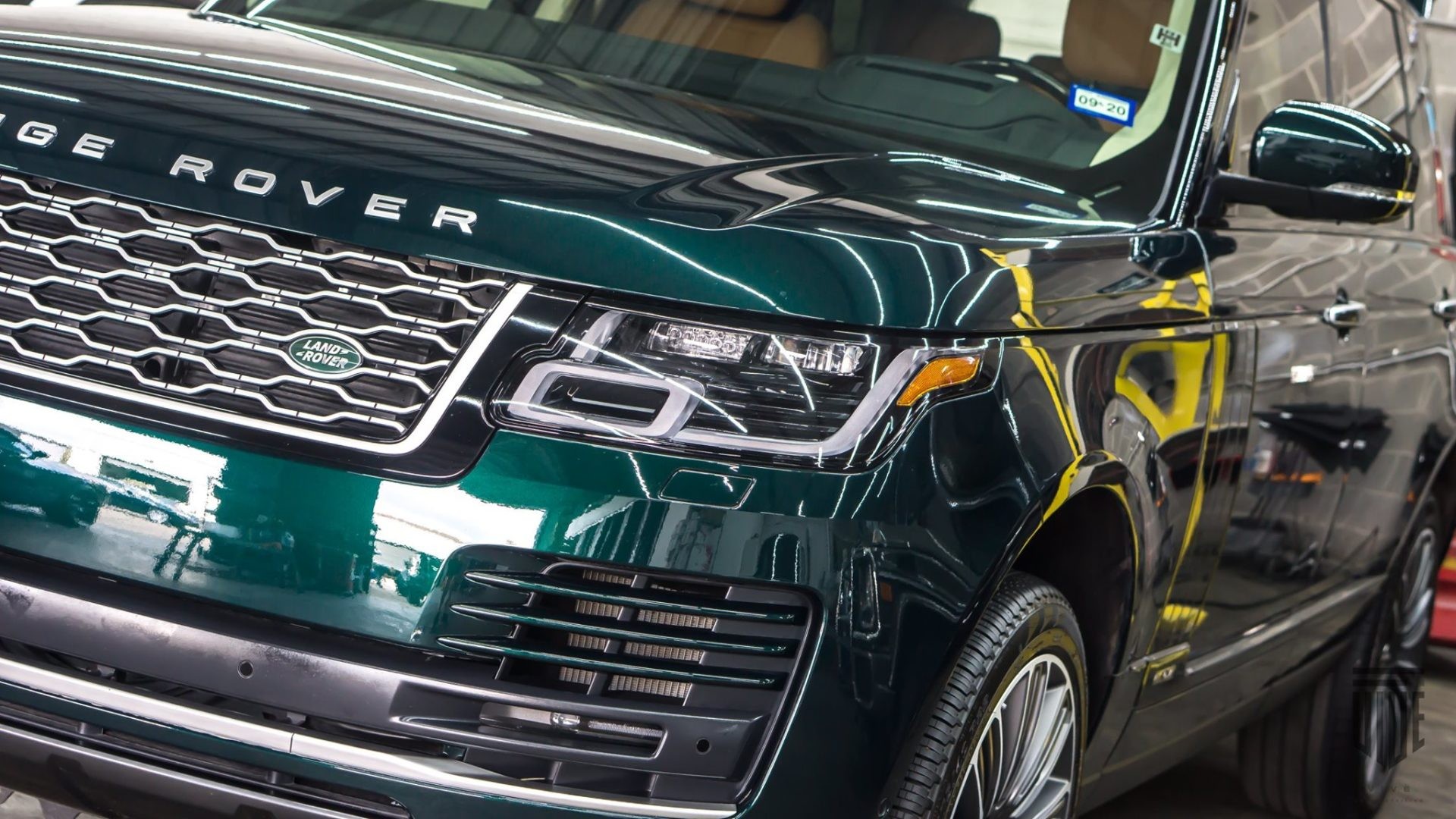You love your car, and keeping it in pristine condition is likely a top priority. You’ve probably explored various methods to protect its paint job, from regular waxing to considering paint protection films (PPF). But then you hear about ceramic coating – the revolutionary solution promising long-lasting shine and superior protection. Terms like “hydrophobic,” “UV protection,” and “self-cleaning” get thrown around, leaving you wondering: what does ceramic coating actually do?
Is it just hype, or does ceramic coating live up to its claims? Is it genuinely better than traditional waxing? How does it compare to the more robust paint protection films? And ultimately, is investing in ceramic coating truly worth it for your vehicle?
If these questions are swirling in your mind, you’re not alone. The internet is awash with information, often conflicting and confusing, about ceramic coatings. As auto detailing experts at cardiagnosticnearme.com, we’re here to cut through the noise and provide you with a clear, expert perspective.
In this guide, we’ll delve into the core functions of ceramic coating. We’ll explain what it is, break down its real advantages and limitations, compare it against other car care options like waxing and PPF, and help you decide if it’s the right choice to protect and enhance your car’s appearance. Let’s get started.
Understanding Ceramic Coating: The Basics
We understand the desire to keep your car looking its best with minimal effort. Traditional methods like regular washing and waxing are time-consuming and often feel like a never-ending cycle. You address dirt, grime, and minor imperfections, only to see them reappear shortly after, sometimes accompanied by new swirl marks from the washing process itself.
This leads you to search for a more permanent, effective solution – something that offers robust protection against environmental hazards and keeps your car looking showroom-ready with less frequent, intensive maintenance. Enter ceramic coating, often touted as the “magic bullet” for car care.
You’ve likely heard glowing testimonials, perhaps from a friend who experienced the transformative effects of ceramic coating on their vehicle. But you might also encounter skepticism and criticism, raising doubts about its real-world performance.
So, what’s the truth? Is ceramic coating truly the answer to preventing dirt and grime buildup and maintaining your car’s pristine finish? Let’s explore the fundamentals.
 Torch red Chevy Corvette with glossy ceramic coating finish
Torch red Chevy Corvette with glossy ceramic coating finish
What Exactly is Ceramic Coating?
Industry-grade ceramic coating is essentially a liquid polymer. When professionally applied to a vehicle’s exterior, it chemically bonds with the factory paint, creating a durable, protective layer. This application is typically done by hand, ensuring even coverage and a seamless integration with your car’s existing paint.
This chemical bonding process is crucial. Instead of simply sitting on top of the paint like wax, ceramic coating becomes a new, functional layer. This layer is hydrophobic, meaning it repels water, and provides a barrier against various environmental contaminants. Importantly, it preserves the integrity of your car’s original paint job underneath.
While some might mistakenly consider ceramic coating as a direct substitute for paint protection film (clear bra), it’s more accurately positioned as a high-performance alternative to waxing. The primary goal is to prevent contaminants like dirt, grime, bird droppings, and tree sap from adhering to the paint and damaging the clear coat.
Often referred to as nano-ceramic coating due to its composition at the nanoscale level, ceramic coating offers a long-lasting protection solution. Depending on the specific product and polymer formulation, it can be considered a permanent or semi-permanent enhancement. Unlike wax, which degrades relatively quickly, ceramic coating is designed to withstand normal weather conditions, including rain, sun, and temperature fluctuations, without breaking down.
Popular and reputable ceramic coating brands include Modesta, Nanolex, CQuartz, Ceramic Pro, and IGL Kenzo. These brands are widely recognized and trusted by professional detailers globally. But before you jump on the ceramic coating bandwagon, let’s delve into the specific benefits it offers.
 Close up of water beading on ceramic coated car surface, demonstrating hydrophobic effect
Close up of water beading on ceramic coated car surface, demonstrating hydrophobic effect
The Key Benefits: What Ceramic Coating Does
Ceramic coating’s effectiveness stems from its unique chemical properties. This translates into a range of tangible benefits for your car, going beyond just aesthetics. Here’s a breakdown of what ceramic coating does to enhance and protect your vehicle:
1. Shields Against Harmful UV Rays:
The sun’s ultraviolet (UV) radiation is a major culprit in paint degradation. Prolonged exposure to UV rays causes oxidation, leading to paint fading, dullness, and a worn-out appearance. Ceramic coating acts as a robust sunscreen for your car’s paint, blocking UV rays and preventing oxidation. This is particularly vital if you frequently park your car outdoors, ensuring your paint retains its vibrant color and luster for longer.
2. Resists Chemical Stains and Etching:
Environmental pollutants, acid rain, industrial fallout, and even bird droppings contain chemicals that can etch into your car’s paint, causing permanent stains and damage. Ceramic coating creates a chemical-resistant barrier, preventing these corrosive substances from bonding directly with the paint. This protection is increasingly important in urban environments with higher air pollution levels, safeguarding your car from unsightly and potentially damaging chemical stains.
3. Enhances Hydrophobic Properties for Easier Cleaning:
One of the most celebrated features of ceramic coating is its hydrophobic nature. This means it strongly repels water. When water comes into contact with a ceramic-coated surface, it beads up and rolls off easily, taking dirt and grime with it. This hydrophobic effect makes washing your car significantly easier and less frequent. Dirt and debris don’t adhere as strongly, and a simple rinse or light wash is often sufficient to restore a spotless shine. Unlike wax, which can wash away over time, ceramic coating’s hydrophobic properties are durable and long-lasting.
4. Delivers a Deep, Glossy Shine:
Beyond protection, ceramic coating significantly enhances your car’s aesthetics. It adds depth and clarity to the paint, resulting in a rich, glossy, “candy-like” finish. This visual enhancement revitalizes your car’s appearance, making it look newer and more vibrant. The enhanced gloss is a major draw for car enthusiasts who want to maximize their vehicle’s visual appeal.
These benefits clearly illustrate the value proposition of ceramic coating. It’s not just about making your car look good; it’s about providing genuine, long-term protection against environmental damage and simplifying car maintenance.
Understanding the Limitations: What Ceramic Coating Doesn’t Do
While ceramic coating offers impressive benefits, it’s crucial to have realistic expectations. It’s not a magical force field and has limitations. Understanding what ceramic coating doesn’t do is just as important as knowing its advantages.
1. It Won’t Prevent All Scratches and Swirl Marks:
Despite its durable nature, ceramic coating is not scratch-proof. While it can offer some resistance to very minor surface scratches, it won’t protect against deeper scratches, swirl marks from improper washing, or rock chips from road debris. Ceramic coating is still essentially a thin layer of clear protectant and retains some of the inherent vulnerability of paint. For robust scratch and chip protection, paint protection film (PPF) remains the superior option.
2. It Doesn’t Eliminate Water Spots Entirely:
While ceramic coating’s hydrophobic properties help water roll off, it doesn’t completely eliminate water spots. Water, even when beaded, can still contain minerals and dissolved particles. As the water evaporates, these minerals can be left behind, creating water spots. While ceramic coating reduces the severity and adhesion of water spots, they can still occur and may require manual removal.
3. It Doesn’t Make Car Washes Obsolete:
Ceramic coating enhances cleaning ease, but it doesn’t eliminate the need for car washes altogether. While less dirt and grime will stick to the surface, your car will still get dirty. Regular washing, although less frequent and easier, is still necessary to remove accumulated dirt, dust, and road grime to maintain the coating’s optimal performance and appearance. Ceramic coating is not a self-cleaning solution.
 Water spots visible on car surface despite hydrophobic coating
Water spots visible on car surface despite hydrophobic coating
Is Ceramic Coating Worth the Investment?
The question of whether ceramic coating is “worth it” ultimately depends on your individual needs and priorities. However, considering its benefits and longevity, for many car owners, the answer is a resounding yes.
Ceramic coating offers a significant upgrade in paint protection compared to traditional waxing. It provides superior resistance to UV damage, chemical stains, and makes car cleaning much easier. While it comes at a higher upfront cost than waxing, its durability and long-term protection can actually be more cost-effective over time. You’ll spend less time and money on frequent waxing and detailing, and your car’s paint will be better preserved, potentially increasing its resale value.
However, if your primary concern is preventing scratches and rock chips, paint protection film (PPF) might be a more suitable, albeit more expensive, investment. PPF offers a thicker, more robust physical barrier against these types of damage.
Ceramic coating excels in providing comprehensive environmental protection and enhancing ease of maintenance and appearance. For car enthusiasts who value a consistently glossy, well-protected vehicle and want to simplify their car care routine, ceramic coating is a highly worthwhile investment.
Final Verdict
Maintaining your car’s appearance is an ongoing effort, but ceramic coating can significantly simplify and enhance this process. It’s not a perfect, all-in-one solution, but it delivers substantial benefits in terms of paint protection, ease of cleaning, and aesthetic enhancement.
If you’re looking for a long-lasting, high-performance paint protection option that goes beyond traditional waxing, ceramic coating is definitely worth considering. To explore if ceramic coating is right for your car, we recommend getting a professional consultation and quote. Contact us today to discuss your needs and learn more about our ceramic coating services.
For those seeking even more advanced protection, explore our resources on paint protection film and other car detailing techniques. Stay tuned to our website for more expert guides, how-tos, and the latest news from the world of auto detailing!